As an Australian business executive, you're likely no stranger to the frustrations of legacy systems that slow down operations, inflate costs, and leave your team scrambling to keep up. Imagine watching competitors launch sleek, efficient apps that boost productivity and customer satisfaction, while your own fragmented development efforts drain resources without delivering real value. In a market where every dollar counts, settling for platform-specific apps means duplicated work, extended timelines, and missed opportunities for growth—pain points that hit hard when growth targets slip and operational expenses skyrocket.
But what if you could cut development time by up to 50%, reduce costs significantly, and deploy high-performance apps across iOS, Android, web, and desktop with a single codebase? That's the transformative power of cross-platform mobile app development in 2026, led by frameworks like Flutter and React Native. These tools aren't just trending—they're dominating, with cross-platform frameworks powering nearly 50% of mobile app projects as early as 2023, a figure expected to grow as businesses prioritise efficiency. Market analyses project Flutter's adoption rate could reach 60% by 2026, driven by its superior performance and seamless UI consistency, while React Native continues to hold strong with 12.57% of the top 500 US apps. At C9, Australia's leading custom software, apps, integration, and database developer, we're here to guide you through this shift, delivering tailored digital solutions that align with your goals of operational efficiency, cost reduction, and competitive advantage. Our innovative, trustworthy, and collaborative approach ensures we address your unique challenges, from outdated legacy systems to high operational costs, transforming them into opportunities for growth.
The Dominance of Flutter and React Native: Key Trends Shaping 2026
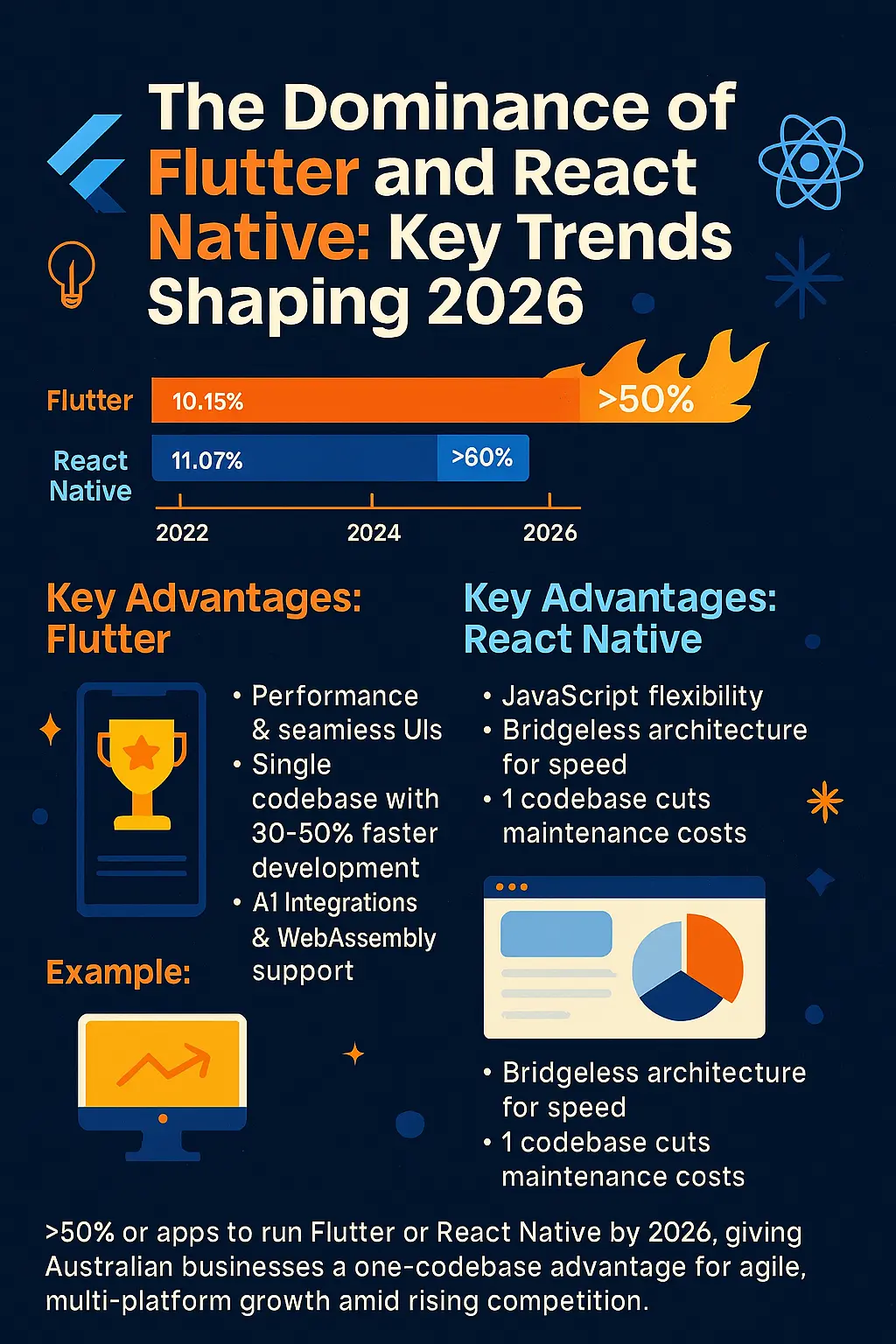
In the evolving landscape of cross-platform mobile app development, Flutter and React Native stand out as the frontrunners, backed by robust adoption data and industry forecasts. Let's delve deeper into why these frameworks are poised to dominate over 50% of apps by 2026, drawing from recent surveys, developer insights, and market projections.
Flutter, developed by Google, has seen its market share climb steadily, from 10.15% in 2022 to 11.07% in 2024, with projections indicating it could capture up to 60% by 2026 thanks to its exceptional performance, pixel-perfect UI consistency, and expanding support for web, desktop, and even IoT integrations. A 2023 Statista survey revealed that 46% of developers worldwide used Flutter, surpassing React Native's 35%, highlighting its appeal for design-heavy apps requiring smooth animations and native-like experiences. Forums and developer communities, such as Reddit's r/FlutterDev, predict Flutter's growth will accelerate in 2025-2026, with features like AI integration and WebAssembly support making it ideal for enterprises building scalable, feature-rich applications. For Australian businesses facing triggers like competitors launching new tech capabilities, Flutter's single codebase approach eliminates redundancy, slashing development time by 30-50% and enabling faster market entry—crucial in a competitive landscape where agility drives profits.
React Native, backed by Meta, excels in community-driven innovations, with a vast ecosystem of plugins and JavaScript-based flexibility that appeals to teams with existing web development expertise. Its market share for newly released apps rose from 4.73% in 2022 to 6.75% in 2024, and it powers 12.57% of the top 500 US apps, including major players like Instagram and Shopify. Developer discussions on platforms like Reddit's r/reactnative emphasise React Native's dominance in large-scale projects, with features like its new Bridgeless Architecture closing the performance gap with native apps. By 2026, both frameworks are expected to coexist, with React Native leading in JavaScript-driven enterprises and Flutter gaining ground in pixel-perfect, performance-intensive scenarios. For cost-conscious Australian executives dealing with high operational costs, this means one codebase for multiple platforms, reducing maintenance overheads and addressing barriers like lack of internal expertise through reusable components and extensive third-party libraries.
Recent X (formerly Twitter) discussions reinforce this dominance: Developers note Flutter's edge in smoothness and ecosystem, while React Native shines for integration with existing JS teams. Case studies show large teams (20+ devs) favouring React Native for scalability, as seen at Shopify with ~2,000 developers, while Flutter powers more standalone or prototype apps. In Australia, where businesses seek to maximise efficiency amid economic pressures, adopting these frameworks can drive higher revenues by enabling rapid iterations and seamless user experiences, ultimately outpacing competitors.
Beware the "AI Cowboys": The Risks of Cheap AI App Builders and Vibes Coding
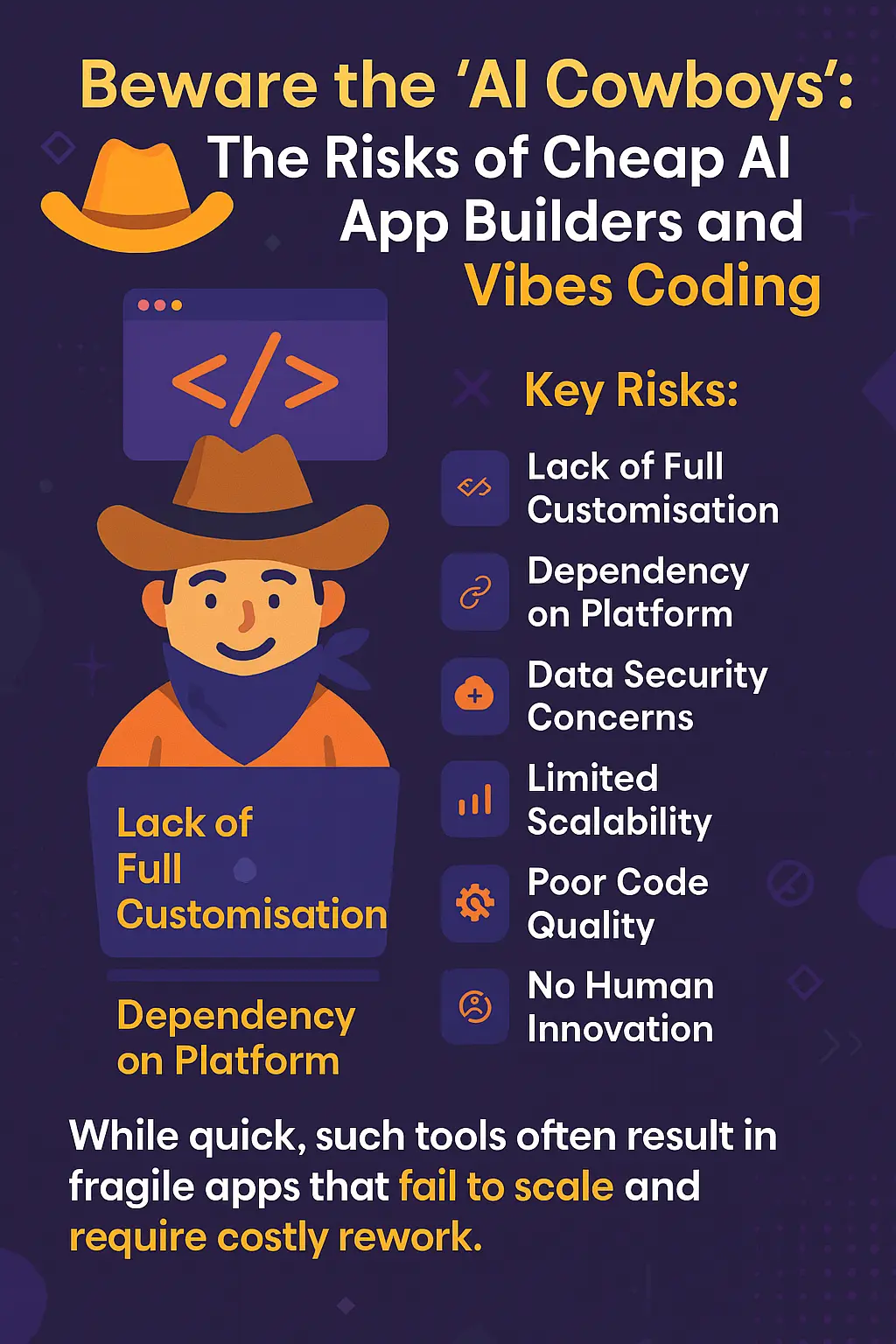
In your quest for quick wins in cross-platform mobile app development, you might encounter "AI Cowboys"—those flashy, low-cost AI app builders promising instant solutions without the hassle. But here's the gray area: these tools often rely on "vibes coding," a superficial, template-driven approach that generates code based on vague prompts, lacking depth in architecture, security, or scalability. While they seem appealing for their speed and affordability, they frequently lead to brittle apps that break under real-world loads, expose data vulnerabilities, or require costly rewrites down the line—aggravating issues like poor customer experiences and missed targets.
Key risks include lack of full customisation, where AI builders struggle with complex integrations beyond simple APIs, leading to isolated apps that don't mesh with your existing systems. Dependency on the platform creates long-term lock-in, hindering flexibility and increasing costs as your needs evolve. Data security concerns arise from external servers and interactions, heightening breach risks in a data-driven world. Limited scalability means apps falter under growth, while poor code quality—often unusable or non-optimised—results in performance issues and inhibits innovation by removing the human creative element. Freelancers using similar vibes-based methods compound the problem, delivering short-term fixes without ongoing support or knowledge transfer. Think about it: an app built on shaky foundations might work initially, but as your business scales, integration failures or performance lags could cost you thousands in downtime. High-profile failures, like Builder.ai's issues with inflated promises and hidden human reliance, underscore these pitfalls.
At C9, we go beyond this by offering comprehensive knowledge transfer, empowering your team with insights into the codebase for long-term independence. This advantage ensures your investment in cross-platform mobile app development yields sustainable results, not hidden pitfalls, aligning with your analytical mindset and drive for reliable, profitable solutions.
Why Choose C9 Over Hundreds of Other Developers?
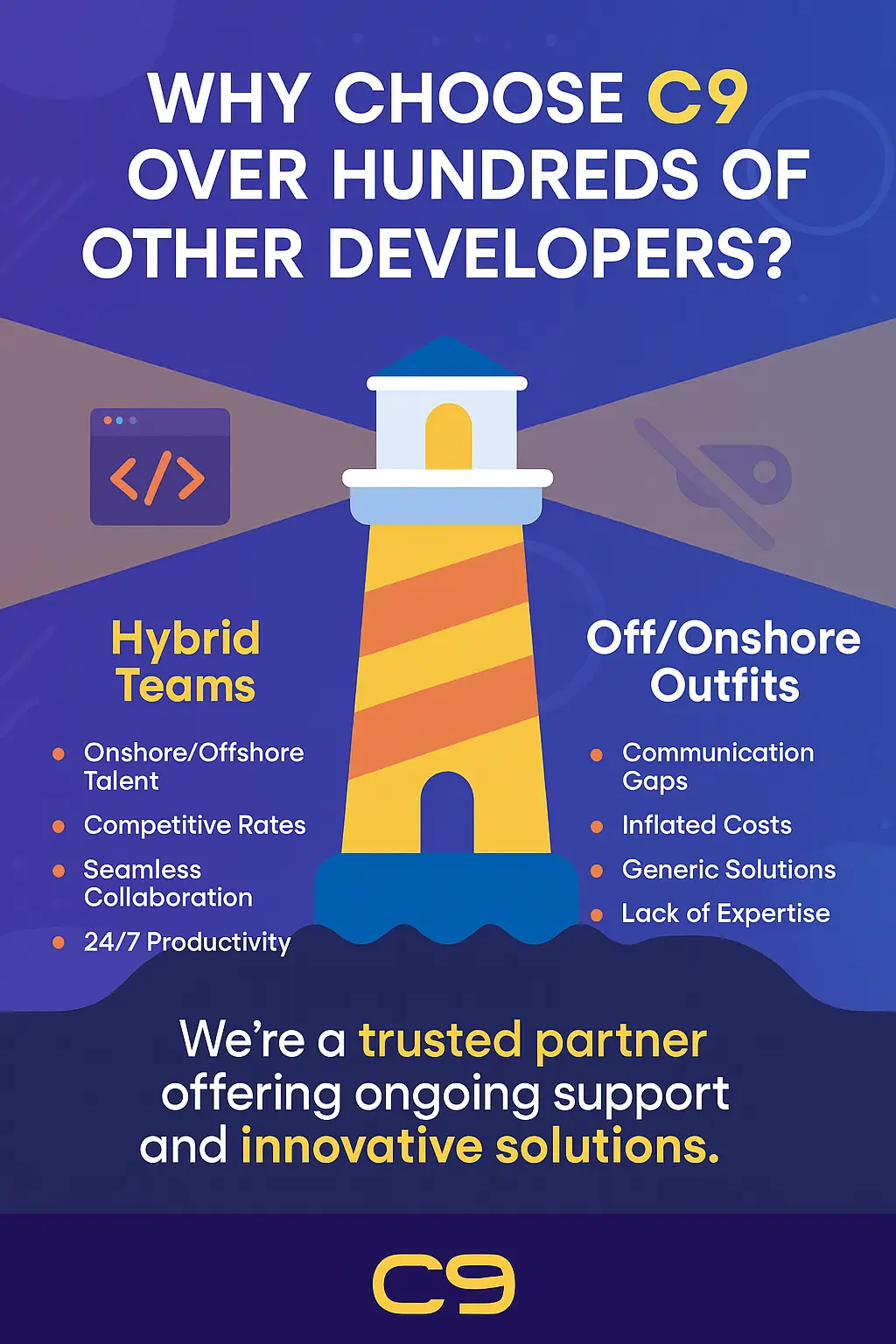
With countless developers vying for your business, what separates C9 in the custom software space? Our blended hybrid onshore and offshore team model combines Australian expertise with global talent, delivering high-quality cross-platform mobile app development at competitive rates without compromising on collaboration or trustworthiness. Unlike purely offshore outfits prone to communication gaps or onshore firms with inflated costs, our hybrid approach ensures seamless integration, cultural alignment, and 24/7 productivity—directly addressing barriers like lack of internal expertise and high development costs.
We stand out with multiple resources dedicated to your project, including developers, integrators, and database specialists, plus built-in knowledge transfer to build your team's capabilities. This collaborative edge means we're not just vendors; we're partners invested in your success, helping you overcome previous bad vendor experiences and employee resistance through proven, innovative solutions. In a sea of generic options, C9's focus on tailored, secure, and reliable products fosters long-term client loyalty, positioning us as your lighthouse for innovation and growth.
Staff Augmentation Options: Flexibility Tailored to Your Needs
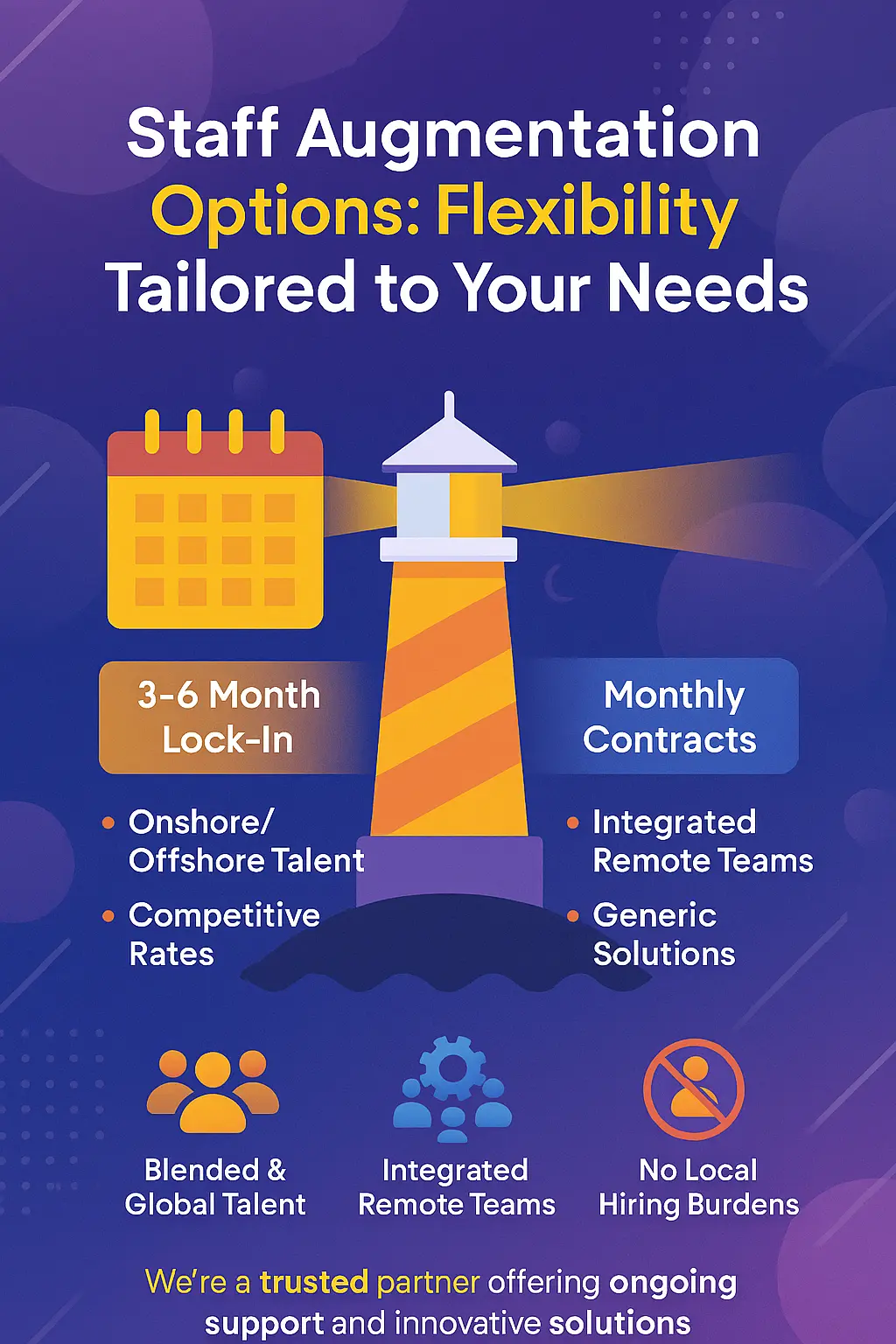
C9's staff augmentation services offer flexible ways to scale your cross-platform mobile app development without the overhead of full hires. Options include minimum lock-in contracts of 3-6 months for stability, or monthly contracts for shorter-term needs. Why opt for the 3-6 month lock-in? It fosters deeper team integration, allows for consistent progress on complex projects, and unlocks discounts—reducing overall costs compared to month-to-month volatility that can disrupt timelines and inflate expenses due to frequent onboarding.
We provide more than single software developers; our integrated teams include blended roles for apps, integrations, and databases, all remote to maximise efficiency without the expectation of 9-5 office presence. No in-house local hiring means you avoid Australian payroll burdens while gaining access to our global talent pool, ideal for businesses seeking to reduce costs without sacrificing quality.
Top FAQs for Staff Augmentation:
- What roles can I augment? From Flutter/React Native specialists to full-stack integrators—customised to your project.
- How do rates work? C9’s rates vary based on skillsets, providing savings over inflated singular hourly rates for all services & roles. Our FY25/26 rates (subject to CPI) assume a mix of onshore and offshore C9 directly hired talent, varying if local-only is mandatory. Additional discounts apply for long-term and multi-resource (>3) contracts. Monthly packages scale up or down with notice periods, including hour rollovers for stockpiling feature development.
- Is it scalable? Absolutely—add resources as needed, ensuring no barriers to growth.
- What about knowledge transfer? Included in every engagement, unlike solo freelancers.
This model empowers driven executives to achieve goals like gaining competitive advantages through technology, all while mitigating triggers such as outdated systems.
The Crucial Role of Discovery Calls: Don't Skip This Step
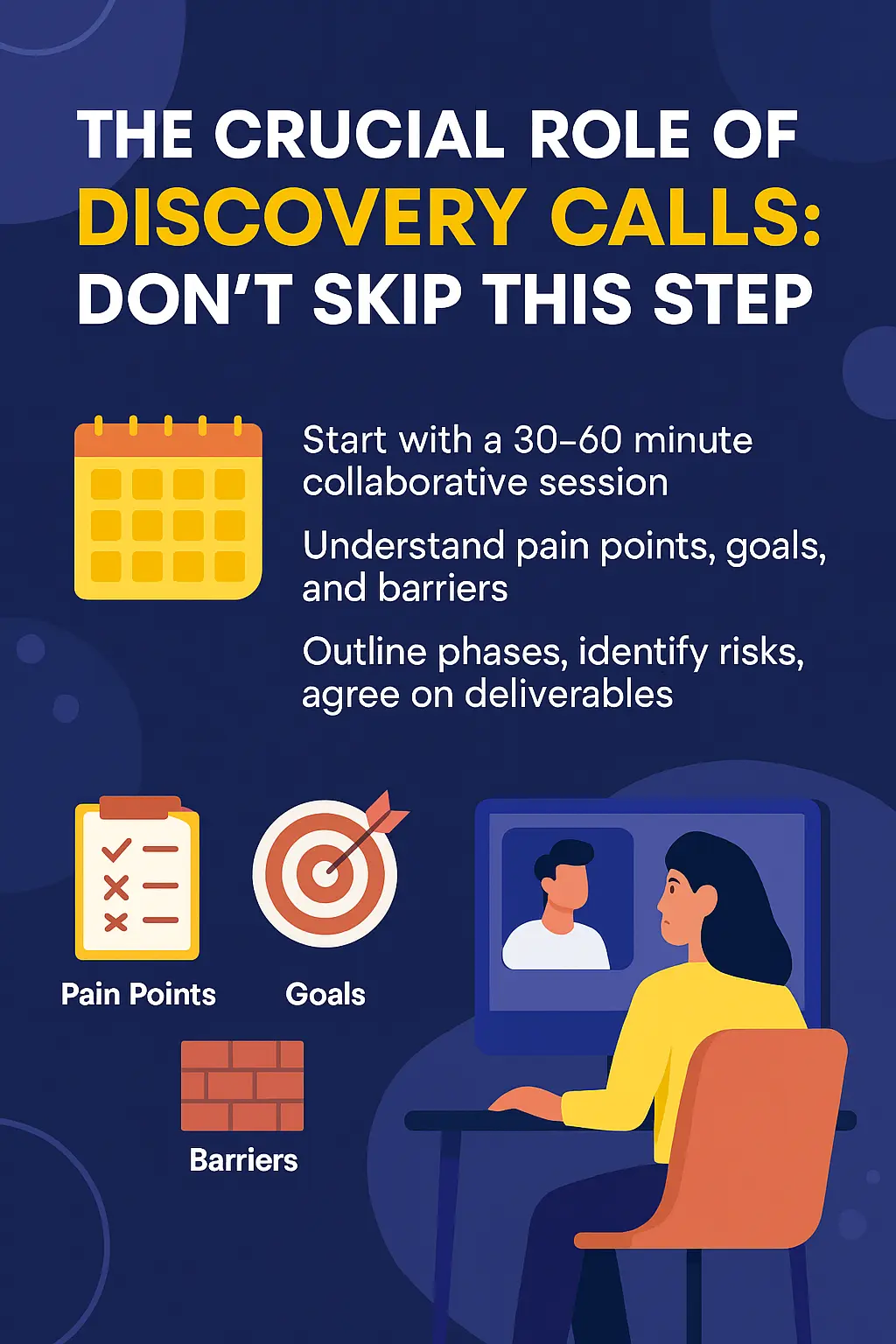
Skipping a discovery call in cross-platform mobile app development is one of the worst ideas—it leaves projects vulnerable to misalignment, scope creep, and wasted resources. These calls are essential for mapping decision points, timelines, and requirements, turning uncertainty into a clear roadmap that drives efficiency and profitability.
Here's how a discovery call works: We start with a 30-60 minute collaborative session to understand your pain points (e.g., outdated systems), goals (e.g., cost reduction), and barriers (e.g., internal resistance). We then outline phases, identify risks, and align on deliverables—far from a waste of time, it's an investment that saves hours later by preventing rework. For instance, it helps break projects into stages for early ROI, like launching a MVP in weeks to generate quick wins, then using those savings to fund advanced features. At C9, discovery ensures trustworthy, innovative outcomes tailored to Australian businesses, addressing your detailed-oriented nature and persuasive drive for results.
The Pitfalls of Indicative Pricing: Why Discovery-Based Is Superior
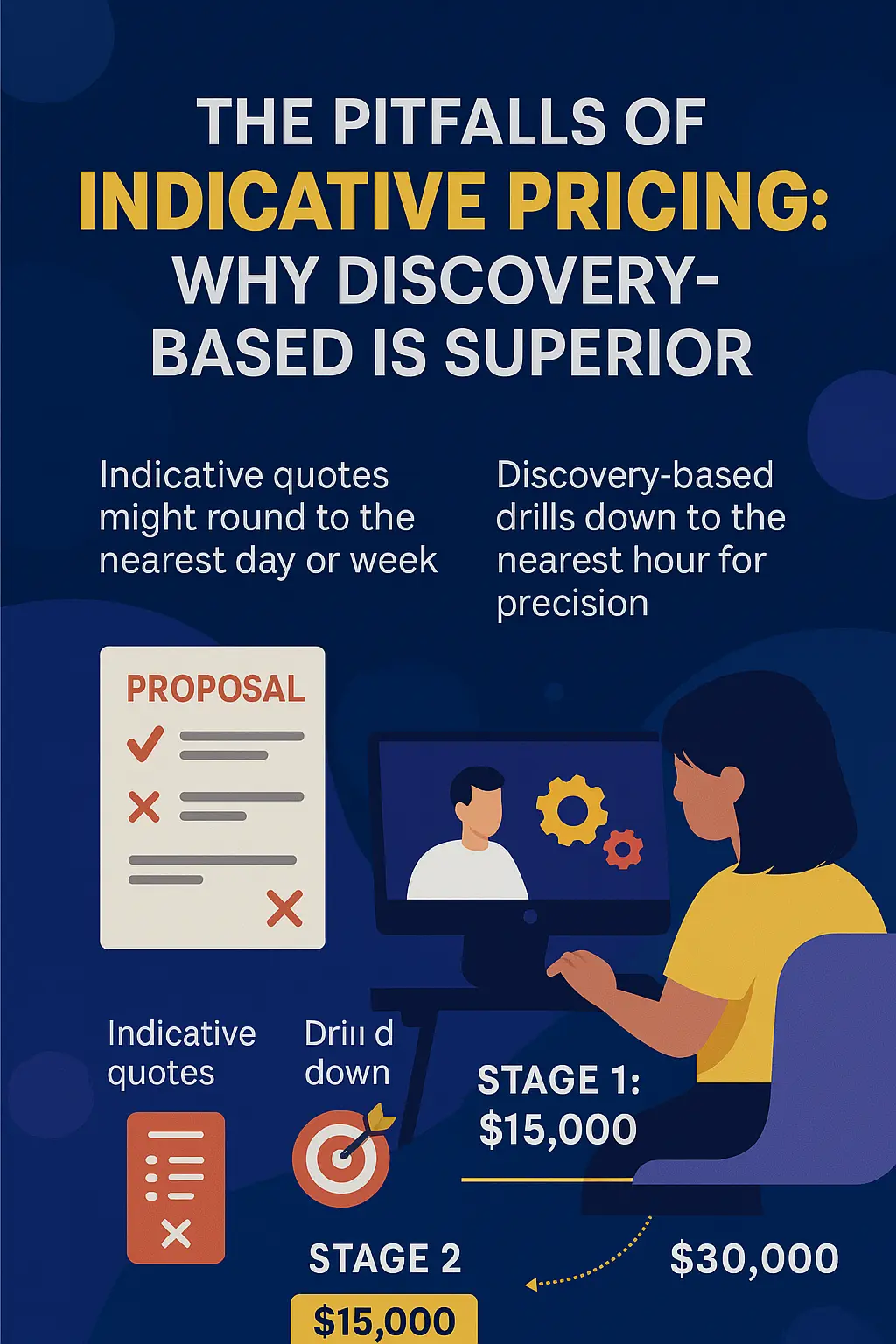
Indicative pricing proposals might seem convenient, but they're often not worth the paper they're written on—vague estimates based on assumptions that ignore your unique needs, leading to budget overruns and frustration. For example, an indicative quote might round to the nearest day or week (e.g., "2-3 weeks at $10,000"), but reality could balloon to 4 weeks due to unforeseen integrations, costing you extra.
In contrast, discovery-based pricing drills down to the nearest hour for precision. Take a real-world example: For a cross-platform app using Flutter, indicative might estimate 200-300 hours at $150/hour ($30,000-$45,000). Post-discovery, we pinpoint 250 hours exactly, broken into stages—e.g., Stage 1 (MVP: 100 hours, $15,000) for early ROI, feeding savings into Stage 2. This approach pushes the importance of discovery before any pricing, ensuring no surprises and aligning with your driven, analytical mindset. By breaking projects into stages, you realise quick value, reinvesting efficiencies into future improvements—maximising profits and overcoming barriers like uncertainty around starting processes.
Embrace the Future with C9's Expertise
In 2026, cross-platform mobile app development dominated by Flutter and React Native offers Australian businesses a gateway to efficiency and growth—but only with the right partner. At C9, we transform your challenges into opportunities through innovative, trustworthy solutions that deliver real results, from streamlined operations to competitive edges.
Ready to outpace competitors and streamline your operations? Schedule a discovery call today at https://www.c9.com.au/ and let's collaborate on your custom app journey.